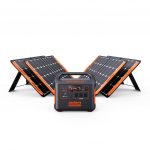As a professional copywriting journalist, I have researched extensively about the various tools and techniques that can enhance a child’s educational journey. One such innovative tool is the use of educational robots in early childhood learning. Robotics in early childhood education is gaining momentum as educators and parents increasingly realize the numerous benefits it offers. In this section, we will dive into the world of educational robots and their role in early childhood learning.
Table of Contents
Key Takeaways
- Educational robots can enhance early childhood learning experiences.
- Robotics in early childhood education is gaining momentum.
- The advantages of incorporating robots in early childhood education are substantial.
- Educational robots are available in different forms and can cater to various educational needs.
- Robots can promote critical thinking and problem-solving in young children.
Benefits of Using Robots in Early Childhood Learning
Using interactive robots for young children in early childhood learning can have numerous benefits. These technological tools can engage and motivate children and enhance their educational experiences. Here are some of the benefits of using robots in early childhood learning:
- Improved engagement: Interactive robots can capture the attention of young children and keep them engaged in learning activities. This can help children stay focused and motivated throughout the learning process.
- Enhanced creativity: Educational robots can promote creativity in children by encouraging them to think outside the box and come up with unique solutions to problems. This can help foster a lifelong love of learning and exploration.
- Developing problem-solving skills: Robots can challenge children to solve problems and think critically, which can help develop strong problem-solving skills. This can also help children develop confidence in their own abilities to solve problems.
- Increased social interaction: Robots can provide opportunities for children to interact with each other and work together on projects. This can help children develop important social skills such as cooperation, communication, and teamwork.
- Personalized instruction: Educational robots can offer personalized instruction based on a child’s individual needs and learning styles. This can help children progress at their own pace and achieve their full potential.
Overall, using robots in early childhood learning can provide a fun and engaging way for children to learn and develop important skills. Whether in the classroom or at home, incorporating educational robots can enhance a child’s educational journey and prepare them for success in the future.
Technology in Early Childhood Education
The use of technology in early childhood education is becoming increasingly popular, and for good reason. Educational toys and tools, including robots, can play a significant role in promoting child development and enhancing learning experiences.
One of the primary benefits of technology in early childhood education is its ability to engage and motivate young children. Educational toys, such as robots, can capture a child’s curiosity and stimulate their imagination. Additionally, technology can provide opportunities for hands-on learning, promoting exploration and experimentation in a safe and controlled manner.
Moreover, educational toys and tools can support various aspects of child development, including cognitive, social, and emotional skills. Young children can learn problem-solving, critical thinking, and teamwork skills through interactive play with educational robots and other technological tools.
However, it is essential to note that technology should not replace traditional methods of early childhood education. Instead, it should be integrated into existing curriculum and used as a complementary tool. Educational toys and tools can enhance learning experiences and provide children with opportunities for exploration and discovery.
Overall, technology in early childhood education, including educational robots, can have a significant positive impact on child development and learning outcomes. Parents and educators should embrace the use of educational toys and tools and explore ways to integrate them into their children’s learning experiences.
Integrating Robots in Early Childhood Classrooms
Integrating robots in early childhood classrooms can be an effective way to enhance the learning experience for young children. There are numerous benefits to incorporating robotics into the curriculum, including promoting critical thinking, problem-solving skills, and creativity. However, it is essential to approach the integration of robots with careful planning and consideration.
Factors to Consider
When selecting robots for early childhood classrooms, it is crucial to take into account factors such as age-appropriateness, ease of use, and safety. Robots should be selected based on the learning goals and objectives of the curriculum. The size and design of the robot should also be considered, as they can impact classroom management and mobility.
Effective Implementation Strategies
Teachers should receive appropriate training and professional development to effectively integrate robots into their classroom. It is essential to design lessons that integrate robots seamlessly into the curriculum, rather than treating them as standalone objects. Robotics should be used as tools to enhance learning, rather than a replacement for traditional teaching methods.
Benefits of Robotics in the Curriculum
Robotics can not only enhance the curriculum but also create a more engaging and interactive learning experience for young children. Robots can provide a multisensory learning experience, allowing children to learn through touch, sight, and sound. Robotics can also promote collaboration and communication skills as children work together to program and manipulate robots.
Challenges and Solutions
Integrating robots into the curriculum may present certain challenges, such as the cost of acquiring and maintaining robots and the need for specialized training for teachers. However, there are solutions to these challenges, such as seeking out grants or funding opportunities, collaborating with other educators, and utilizing online resources for training and support.
Overall, integrating robotics into early childhood classrooms can foster a love of learning and provide children with valuable skills that they can carry with them throughout their educational journey.
The Importance of Robots in Early Childhood Education
As a copywriting journalist, I have seen the significant impact that educational robots can have on young children’s learning experiences. It is crucial to understand the importance of incorporating robotics in early childhood education to support and enhance children’s growth and development.
Early childhood learning with robots promotes critical thinking, problem-solving skills, and creativity in young children. These innovative tools provide hands-on learning experiences and encourage children to explore and experiment with concepts in a fun and interactive way. The use of robots can help to engage and motivate young learners, leading to increased participation and a deeper understanding of the curriculum.
Furthermore, educational robots can support children with special needs and learning differences. These robots can provide a personalized learning experience tailored to their individual needs and abilities, allowing them to learn at their own pace and in their own unique way.
The integration of robots in early childhood education also prepares children for the technology-dominated world they will encounter in the future. By exposing young children to technology at an early age, they can develop a solid foundation of digital literacy skills that will benefit them throughout their lives.
As technology continues to advance, it is crucial to stay up-to-date with the latest tools and resources available for early childhood education. Educational robots have proven to be a valuable asset in supporting children’s learning experiences. Incorporating robots in early childhood education can provide countless benefits to both young learners and educators alike.
Choosing the Right Educational Robots for Early Childhood Learning
When it comes to selecting educational robots for young children, there are several factors to consider. It’s important to choose a robot that is age-appropriate, safe, and offers engaging activities that promote learning and skill development. Here are some tips to help you select the right educational robot for your child:
- Age range: Make sure to choose a robot that is suitable for your child’s age and developmental stage. Robots designed for older children may include more complex features that could be overwhelming or frustrating for younger learners.
- Safety: Look for robots that have been designed with safety in mind, with no sharp or easily breakable parts. Always supervise young children while they interact with robots to ensure their safety and avoid any potential hazards.
- Interactive features: Choose a robot that offers interactive features that engage children in meaningful learning experiences. Look for robots that can respond to conversation, follow simple commands, or offer challenges that promote problem-solving and critical thinking skills.
Interactive robots for young children should be designed to encourage social interaction and promote communication skills. Some robots come with a range of sensors and software that can help children to learn to read, recognize numbers and letters, and even explore basic coding concepts. Others offer hands-on activities that encourage children to experiment, create, and problem-solve.
Types of Educational Robots for Early Childhood Learning
There are several types of educational robots available for early childhood learning, each with its own unique features and benefits. Here are some of the most common types of robots used in early childhood education:
| Robot Type | Description |
|---|---|
| Programmable robots | These robots are designed to be programmed by children, allowing them to learn coding concepts through hands-on experience. |
| Remote-controlled robots | These robots can be controlled via a remote, allowing children to explore cause-and-effect relationships and develop fine motor skills. |
| Sensory robots | These robots include a range of sensors that allow them to interact with their environment. They can help children learn about cause-and-effect relationships and develop problem-solving skills. |
Choosing the right educational robot for your child can be a fun and rewarding process. By considering the age-appropriateness, safety, and interactive features of each robot, you can help your child to develop the skills they need to succeed in school and beyond.
Practical Implementation of Educational Robots in Early Childhood Learning
When it comes to implementing educational robots in early childhood learning, there are a few practical considerations to keep in mind. As technology continues to advance, robots are becoming more accessible to parents and educators, but it’s important to use them effectively in order to maximize their educational benefits.
One key factor to consider is the age-appropriateness of the robot and its features. Young children require simpler and more intuitive interfaces, while older children may benefit from more complex programming options. Additionally, it’s important to choose robots that are durable and child-friendly, with features that won’t pose a safety hazard.
Another important aspect to consider is the integration of technology into the classroom. Teachers and parents should work together to develop effective lesson plans and activities that incorporate educational robots. It’s important to ensure that the use of technology does not detract from other important aspects of early childhood education, such as social interaction and hands-on learning.
Training and support are also important when implementing educational robots. Teachers and parents may require additional training to effectively integrate and utilize new technologies. It’s also important to have access to technical support and troubleshooting resources in case issues arise.
Finally, it’s important to monitor and assess the impact of educational robots on children’s learning experiences. This can be done through observation, feedback from children, and formal evaluation methods. By regularly assessing the effectiveness of educational robots, parents and educators can ensure that they are using them to their full potential.
Overall, incorporating robots into early childhood learning can be a valuable tool for enhancing children’s educational experiences. However, it’s important to choose appropriate robots, integrate them effectively, and monitor their impact to ensure success.
Engaging Activities with Educational Robots for Early Childhood Learning
Educational robots are an excellent tool for engaging young children in exciting and interactive activities that promote learning. By using robotic technology, children can develop critical thinking, problem-solving skills, and creativity while having fun. Here are some engaging activities that can be conducted using educational robots for early childhood learning:
1. Storytelling with Robots
Using robots for storytelling can encourage children to use their imagination and creativity while developing their language skills. Children can choose a storybook and program the robot to act out the characters by moving its arms and playing sounds. This activity helps children to understand the storyline better and enhances their listening and comprehension skills.
2. Treasure Hunt with Robots
Children can learn about spatial awareness and problem-solving skills by programming their robots to find hidden objects around the room. The robot can be programmed to move in specific directions, and children can navigate it around the room using a remote control. This activity is engaging and encourages children to use their problem-solving skills in a fun and interactive way.
3. Dancing with Robots
Dancing with robots can help children develop their gross motor skills while having fun. Children can program the robot to perform specific dance moves and dance along with it. This activity encourages children to use their creativity and imagination while developing their coordination and balance.
4. Building with Robots
Children can use educational robots to enhance their building and construction skills. By programming the robot, children can build structures and models using blocks and other materials. This activity encourages children to use their creativity and develops their spatial awareness and problem-solving skills.
Overall, using educational robots for early childhood learning can be an excellent way to engage young children in meaningful and interactive activities. These activities can help children develop critical skills while having fun and enjoying the learning process.
Monitoring Progress and Assessing Learning with Educational Robots
Educational robots offer a unique opportunity for monitoring progress and assessing learning outcomes. Robotics in early childhood education can be used to track various aspects of a child’s development, including cognitive, social, and emotional growth.
One way to monitor a child’s progress is through the analysis of data collected by the robot during play sessions. Educational robots equipped with sensors and cameras can capture information about a child’s actions, including their movement, interaction, and problem-solving skills. This data can be used to develop a profile of the child’s strengths and weaknesses, which can guide the development of future learning activities.
Another way to track progress is through the use of assessments specifically designed for robotics in early childhood curriculum. These assessments are designed to evaluate a child’s skills related to coding, engineering, and other STEM-based subjects. By analyzing the results of these assessments, educators can identify areas of strength or weakness and adjust their teaching strategies accordingly.
Overall, monitoring progress and assessing learning with educational robots offers an objective and data-driven approach to early childhood education, providing teachers and parents with valuable insights into a child’s development.
Overcoming Challenges in Implementing Educational Robots in Early Childhood Learning
While the potential benefits of incorporating educational robots in early childhood learning are vast, there are also a few challenges that need to be addressed. One of the significant challenges is the lack of familiarity and comfort with technology among teachers and parents. Many educators may feel overwhelmed by the task of integrating robots into their curriculum or may lack the confidence to use them effectively.
Another challenge is the cost of acquiring and maintaining robotics technology in schools and homes. Educational robots can be expensive, and the cost of maintenance and repairs can add up over time. Additionally, there may be a lack of resources or funding for schools to invest in this technology.
Lastly, there is the issue of ensuring that children are still receiving a balanced education that includes hands-on learning experiences, social interaction, and physical activity. While educational robots can enhance learning in many areas, they cannot replace the benefits of human interaction and exploration.
To overcome these challenges, it is essential to provide adequate training and support to educators and parents. This includes offering workshops, training sessions, and resources on how to effectively integrate robots into early childhood learning. It is also crucial to ensure that the cost of educational robots is not prohibitive, and that schools and families have access to funding or grants to acquire this technology.
Furthermore, it is critical to use educational robots as a tool to enhance, not replace, traditional learning experiences. Robotics should be integrated into a broader curriculum that includes hands-on activities, social interaction, and physical play. This will ensure that children receive a balanced education that incorporates technology while still prioritizing the importance of human interaction.
Overall, while there are challenges to implementing educational robots in early childhood learning, these tools provide numerous benefits that can enhance children’s educational experiences. By addressing these challenges and ensuring that robots are integrated effectively into the curriculum, we can create a learning environment that fosters critical thinking, problem-solving, and creativity, setting children up for a bright future.
The Importance of Educational Robots in Early Childhood Learning
Throughout this article, we have explored the world of educational robots and their role in early childhood education. From the benefits of using these interactive tools to the practical implementation strategies, it is clear that educational robots have become an invaluable resource for enhancing children’s learning experiences.
Enhancing Creativity and Critical Thinking Skills
One significant benefit of educational robots in early childhood learning is their ability to promote creativity and critical thinking skills in young children. These robots provide a dynamic and engaging platform for children to explore and experiment with various concepts, fostering imaginative thinking and problem-solving.
Supporting Early Childhood Curriculum
Another advantage of educational robots is their ability to support early childhood curriculum. These robots can be used to teach concepts such as math, science, and language arts in a fun and interactive manner. By incorporating robots into the learning experience, children are more likely to retain the information and develop a deeper understanding of the material.
Tracking and Assessing Learning Outcomes
Educational robots also offer a unique way to track and assess children’s learning outcomes. These robots can collect data on a child’s progress and provide valuable insights for teachers and parents. By monitoring a child’s performance, educators can adjust their teaching strategies and provide targeted support to ensure that every child has the opportunity to succeed.
Conclusion
In conclusion, the use of educational robots in early childhood learning has immense potential for enhancing children’s education. From promoting creativity and critical thinking skills to supporting early childhood curriculum and tracking learning outcomes, these innovative tools have revolutionized the way we approach early education. As a journalist and a parent, I highly recommend that parents and educators embrace these technologies as a valuable resource in their children’s educational journey.
FAQ
Q: What are educational robots?
A: Educational robots are interactive devices designed to support learning and development in early childhood. They can engage children in various educational activities and promote skills such as problem-solving, critical thinking, and creativity.
Q: What are the benefits of using robots in early childhood learning?
A: Incorporating robots in early childhood learning can have several advantages. They can enhance engagement and motivation, provide personalized learning experiences, promote social interaction, and develop essential 21st-century skills.
Q: How does technology play a role in early childhood education?
A: Technology, including educational robots, is revolutionizing early childhood education. It offers interactive and engaging tools that can support learning across various subjects, foster creativity, and prepare children for the digital world.
Q: How can robots be integrated into early childhood classrooms?
A: Robots can be effectively integrated into early childhood classrooms by aligning them with the curriculum and learning objectives. They can be used for hands-on activities, storytelling sessions, problem-solving challenges, and collaborative projects.
Q: Why are robots important in early childhood education?
A: Robots play a crucial role in early childhood education as they promote critical thinking, problem-solving skills, creativity, and social interaction. They provide a stimulating learning environment that encourages exploration and curiosity.
Q: What factors should I consider when choosing educational robots for my child?
A: When selecting educational robots for early childhood learning, consider factors such as age appropriateness, learning objectives, ease of use, durability, safety features, and the ability to personalize the learning experience.
Q: How can educational robots be practically implemented in early childhood learning?
A: Teachers and parents can implement educational robots by incorporating them into lesson plans, organizing hands-on activities, using them for storytelling or role-playing, and providing guidance and support to children during their interactions with the robots.
Q: What are some engaging activities that can be conducted using educational robots?
A: Engaging activities with educational robots include programming challenges, building and coding robots, creating interactive stories, solving puzzles, engaging in collaborative projects, and experimenting with different robot functionalities.
Q: How can educational robots be used to monitor progress and assess learning outcomes?
A: Educational robots can be used to monitor progress and assess learning outcomes by tracking children’s interactions, collecting data on their performance, and providing feedback. This data can be used to identify strengths and areas for improvement.
Q: What are some common challenges in implementing educational robots in early childhood learning?
A: Common challenges include limited access to technology, lack of training for educators and parents, concerns about screen time, and the need for ongoing technical support. These challenges can be addressed through proper planning and collaboration.









